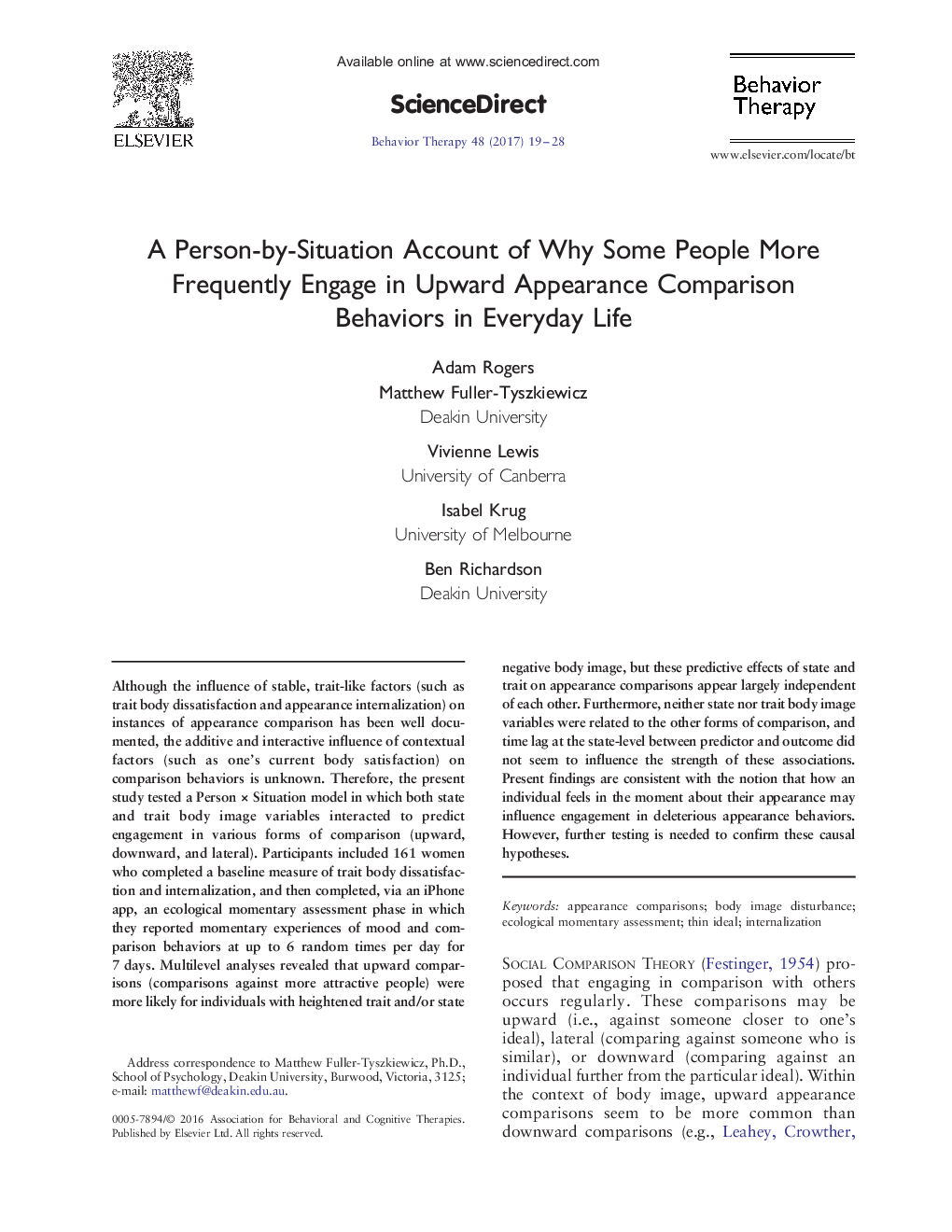| کد مقاله | کد نشریه | سال انتشار | مقاله انگلیسی | نسخه تمام متن |
|---|---|---|---|---|
| 5038077 | 1370248 | 2017 | 10 صفحه PDF | دانلود رایگان |
- We used ecological momentary data to predict instances of appearance comparisons.
- This is the first study to jointly consider state and trait predictors of comparisons.
- Trait body dissatisfaction predicted upward comparisons.
- State body satisfaction individuals were less likely to engage in upward comparisons.
- Downward and lateral comparisons were unrelated to these body image variables.
Although the influence of stable, trait-like factors (such as trait body dissatisfaction and appearance internalization) on instances of appearance comparison has been well documented, the additive and interactive influence of contextual factors (such as one's current body satisfaction) on comparison behaviors is unknown. Therefore, the present study tested a Person Ã Situation model in which both state and trait body image variables interacted to predict engagement in various forms of comparison (upward, downward, and lateral). Participants included 161 women who completed a baseline measure of trait body dissatisfaction and internalization, and then completed, via an iPhone app, an ecological momentary assessment phase in which they reported momentary experiences of mood and comparison behaviors at up to 6 random times per day for 7 days. Multilevel analyses revealed that upward comparisons (comparisons against more attractive people) were more likely for individuals with heightened trait and/or state negative body image, but these predictive effects of state and trait on appearance comparisons appear largely independent of each other. Furthermore, neither state nor trait body image variables were related to the other forms of comparison, and time lag at the state-level between predictor and outcome did not seem to influence the strength of these associations. Present findings are consistent with the notion that how an individual feels in the moment about their appearance may influence engagement in deleterious appearance behaviors. However, further testing is needed to confirm these causal hypotheses.
Journal: Behavior Therapy - Volume 48, Issue 1, January 2017, Pages 19-28
